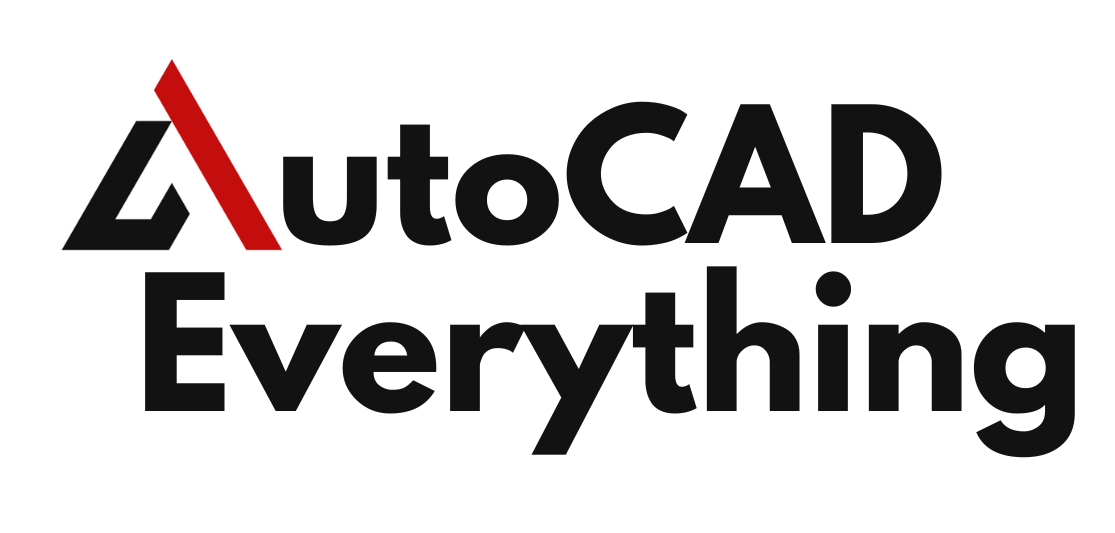Introduction
Precision is crucial in AutoCAD, whether you’re drafting architectural plans, engineering schematics, or detailed 3D models. AutoCAD offers several features that help ensure your drawings are accurate and aligned: the Grid, Snap, and Ortho modes. These tools simplify the process of drawing precise lines, aligning objects, and maintaining consistent spacing. This article provides a comprehensive guide on how to use AutoCAD Grid features effectively to improve the accuracy and efficiency of your AutoCAD drawings.
Table of Contents
Understanding the AutoCAD Grid, Snap, and Ortho Modes
The Grid
What is the Grid in AutoCAD?
The Grid in AutoCAD is a pattern of intersecting lines that appears in the drawing area, acting as a visual guide for placing objects and ensuring alignment. While the Grid itself doesn’t constrain your drawing, it provides a reference framework that can make drafting easier and more organized.
- Visibility: The Grid is visible in the drawing area and can be toggled on or off as needed. It’s particularly useful in the early stages of a project when setting up the layout and alignment of objects.
- Customization: You can customize the spacing, size, and appearance of the Grid to match the scale and complexity of your drawing. This flexibility allows you to tailor the Grid to different types of projects.

How to Use the Grid
- Enable the Grid:
- To toggle the Grid on or off, click the Grid icon on the status bar (a dotted grid symbol) or press
F7on your keyboard.
- To toggle the Grid on or off, click the Grid icon on the status bar (a dotted grid symbol) or press
- Adjust Grid Settings:
- Right-click the Grid icon and select “Settings” to open the Drafting Settings dialog box. Here, you can adjust the Grid spacing (the distance between grid lines) to suit your drawing needs.
- Using the Grid for Alignment:
- While the Grid does not physically constrain your cursor, it helps you visually align objects. It’s particularly helpful when combined with Snap mode for precise placements.
Snap Mode
What is Snap Mode in AutoCAD?
Snap Mode in AutoCAD restricts the movement of the cursor to predefined intervals, or “snap points,” allowing you to place objects precisely on the grid or at specific increments. This feature ensures that lines, circles, and other elements are placed exactly where you want them, eliminating the guesswork in manual placement.
- Snap Spacing: Like the Grid, Snap mode can be customized to snap at specific intervals, which can be set independently from the Grid spacing. This allows for precise control over the placement of objects.
- Snap Types: AutoCAD supports various types of snaps, including endpoint, midpoint, center, intersection, and more. These snaps are essential for aligning objects and drawing elements accurately.
How to Use Snap Mode
- Enable Snap Mode:
- Toggle Snap mode on or off by clicking the Snap icon on the status bar (a small box with crosshairs) or pressing
F9on your keyboard.
- Toggle Snap mode on or off by clicking the Snap icon on the status bar (a small box with crosshairs) or pressing
- Adjust Snap Settings:
- Right-click the Snap icon and select “Settings” to open the Drafting Settings dialog box. Here, you can adjust the snap spacing and choose between Grid Snap (snaps to grid lines) and Polar Snap (snaps along polar angles).
- Using Object Snaps (OSNAP):
- Object Snaps provide snap points related to existing geometry, such as endpoints, midpoints, or intersections. Activate Object Snap by pressing
F3or clicking the OSNAP icon on the status bar. You can also customize which snap points are active by right-clicking the OSNAP icon and selecting “Settings.”
- Object Snaps provide snap points related to existing geometry, such as endpoints, midpoints, or intersections. Activate Object Snap by pressing
Ortho Mode
What is Ortho Mode in AutoCAD?
Ortho Mode constrains the cursor movement to horizontal or vertical directions, making it easier to draw straight lines at right angles. This feature is especially useful for drafting floor plans, technical drawings, and other designs where precise 90-degree angles are required.
- Constrained Drawing: Ortho Mode ensures that all lines you draw are perfectly horizontal or vertical, eliminating the possibility of slight angular deviations that can occur with freehand drawing.
How to Use Ortho Mode
- Enable Ortho Mode:
- Toggle Ortho Mode on or off by clicking the Ortho icon on the status bar (a right-angle icon) or pressing
F8on your keyboard.
- Toggle Ortho Mode on or off by clicking the Ortho icon on the status bar (a right-angle icon) or pressing
- Drawing with Ortho Mode:
- With Ortho Mode enabled, any line or polyline you draw will automatically snap to horizontal or vertical directions, ensuring that your drawing remains aligned.
- Combining Ortho with Snap:
- For maximum precision, combine Ortho Mode with Snap Mode. This setup allows you to draw straight lines that snap to exact intervals or grid points, ensuring consistent spacing and alignment throughout your drawing.
Practical Applications of Grid, Snap, and Ortho Modes
Creating a Floor Plan
When creating a floor plan, precision is essential. The combination of Grid, Snap, and Ortho modes ensures that walls, doors, and windows are aligned and spaced accurately.
- Setup:
- Enable the Grid and adjust the spacing to match the scale of your floor plan. For example, set the grid to 1 foot per square if you’re working on a residential floor plan.
- Drawing Walls:
- Use Ortho Mode to draw straight walls. Enable Snap Mode to ensure that wall lengths are precise and match your design specifications.
- Placing Doors and Windows:
- Use Object Snaps (OSNAP) to place doors and windows accurately along the walls. Snap to the midpoint or endpoint of walls to ensure that openings are centered or aligned correctly.
Drafting a Mechanical Part
In mechanical drafting, the accurate placement of holes, slots, and other features is critical. Snap and Ortho modes are invaluable for ensuring that all elements of the design are placed with precision.
- Setup:
- Enable Snap Mode and set the snap interval to match the units of your drawing, such as millimeters or inches.
- Drawing Features:
- Use Ortho Mode to ensure that features like holes are aligned along the primary axes of the part. Combine with Object Snaps to center holes or align them with other features.
- Verifying Dimensions:
- Use the Grid as a visual aid to verify that all features are correctly spaced and aligned according to the design specifications.
Designing a Circuit Diagram
For circuit diagrams, Grid and Snap modes help in placing components like resistors, capacitors, and wires with precision, ensuring a clean and organized layout.
- Setup:
- Enable the Grid and adjust the spacing to fit the standard distances between circuit components.
- Placing Components:
- Use Snap Mode to place components exactly on the grid, ensuring uniform spacing and alignment. This makes the diagram easier to read and interpret.
- Connecting Components:
- Use Ortho Mode when drawing wires to ensure that they run straight along the grid lines, maintaining a neat and professional appearance.
Tips for Maximizing Precision with Grid, Snap, and Ortho Modes
- Customize Your Setup:
- Adjust the Grid and Snap settings to match the scale and requirements of your project. For large-scale drawings, increase the Grid spacing and Snap interval; for detailed work, reduce them accordingly.
- Use Shortcuts:
- Familiarize yourself with the keyboard shortcuts (
F7for Grid,F9for Snap, andF8for Ortho) to quickly toggle these modes as you work.
- Familiarize yourself with the keyboard shortcuts (
- Combine Tools:
- Combine Grid, Snap, and Ortho modes with Object Snaps for maximum precision, especially when aligning new elements with existing geometry.
- Regularly Check Settings:
- As your drawing progresses, check that your Grid, Snap, and Ortho settings are still appropriate for the current stage of your project. Adjust them as needed to maintain accuracy.
Suggested- AutoCAD for 3D Modeling
Conclusion
The Grid, Snap, and Ortho modes in AutoCAD are essential tools for achieving precision in your drawings. By understanding how to use these features effectively, you can ensure that your designs are accurate, aligned, and professional. Whether you’re creating architectural plans, mechanical parts, or circuit diagrams, these tools will help you maintain control over your drawing and improve your overall efficiency. Mastering Grid, Snap, and Ortho modes is a key step towards becoming a proficient AutoCAD user.
FAQs
- How do I enable Snap Mode in AutoCAD?
You can enable Snap Mode by clicking the Snap icon on the status bar or pressingF9on your keyboard. - What is the difference between Grid and Snap in AutoCAD?
The Grid is a visual reference that helps you align objects, while Snap Mode restricts your cursor movement to specific intervals or points, allowing for precise placement of objects. - Can I customize the Grid spacing in AutoCAD?
Yes, you can customize the Grid spacing by right-clicking the Grid icon and selecting “Settings.” This allows you to adjust the distance between grid lines. - When should I use Ortho Mode?
Ortho Mode is ideal for drawing straight lines at right angles, making it particularly useful for architectural and engineering drawings that require precise horizontal and vertical alignment. - How do Object Snaps work with Snap Mode?
Object Snaps (OSNAP) allow you to snap to specific points on objects, such as endpoints or midpoints. When used with Snap Mode, they enhance precision by ensuring objects are placed accurately relative to existing geometry

